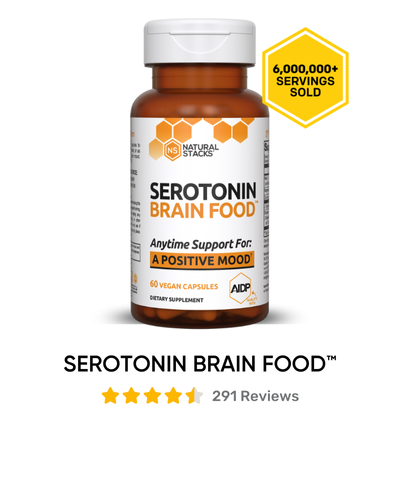5 Hacks To Improve Memory and Learning

Albert Einstein once said that once you stop learning, you start dying.
Or it could have been Isaac Asimov. Both have been attributed with the quote, so let’s assume both those great minds believed it.
None of us here have much interest in dying. And since you’ve chosen to become part of Natural Stacks, chances are that you don’t either.
The people who are drawn to the ethos and values of Natural Stacks are driven, self-motivated people who are constantly looking for ways to improve and optimize their lives.
If you’re like the rest of us, you’re insatiably curious and determined to get more out of every day than you did the last. We’re not the types to accept mediocrity.
For people like us, learning is critical.
Knowledge is the leverage that enables us to become better than we are now. It empowers us to achieve more with every passing moment. Optimizing our ability to learn, therefore, should be utmost among our goals.
Whether it’s creating complex nootropic stacks, coding a challenging new piece of work, or researching the thesis, article or bestseller-you-know-is-in-there, here are five techniques that can help you learn quickly and effectively every time you put your mind to it.
These techniques are used by the world’s leading memory champions - not only can these techniques help you learn things with greater ease, but they can also help you retain the information for longer, and with greater clarity.
1. Use Pomodoros
In the late 1980s, an entrepreneur named Francesco Cirillo developed a behavioural technique called Pomodoro.
Pomodoros are distinct periods of time, broken up by short intervals. For example, you might set a timer, work for 25 minutes and take a break for 5 minutes.
By doing this, you give yourself a short window in which to achieve a task, or part of a task. This keeps you focused, because you have a looming deadline as your break approaches. (Deadlines, as we all know, are the key to achieving anything at all.)
It also improves retention of the new information. The human brain can hold a total of 7 pieces of distinct information at one time.
In order to learn things most effectively, do 7 Pomodoros, and then take a longer break (like having a nap, going out into the sunshine, or reading something unrelated).
This optimizes the amount you can learn in one sitting, without losing detail by overloading yourself.
Takeaway: Break down what you need to learn into small pieces. Learn one small piece per Pomodoro cycle. After 7 Pomodoros, take a longer break.
2. Use visualisation & spaced repetition.
Visualisation is one of the most effective ways you can imprint new information into your brain.
We are all – to one degree or another – visual learners. While you might think of yourself as an auditory or kinaesthetic learner, consider how responsive we are to movies and images.
Visual representation of information ensures greater retention of that information. For this reason, Mattias Ribbing, one of only 122 people to ever earn the title of Grand Master of Memory, recommends visualising new information in your mind as you learn it.
Think about the information in images or a movie, taking note of both large and small details in your minds’ eye. This creates a visual memory for you to return to as time goes on.
And the passage of time is the key factor in spaced repetition. First developed in the late 1800s, spaced repetition should have gotten far greater accolades in learning psychology than it has. It is the notion that revisiting information on regular basis allows you to retain it.
When you first learn something, you should revisit it within a few days. Then come back to it again after a week. Two weeks or so later you should revise it again, and then again in a month.
At this stage, you will have imprinted the information in your mind so that you will never forget it. There are whole systems built around helping you do this.
Takeaway: Revisit learned information at expanding intervals in order to cement it into your brain.
3. Use relational learning
Your brain is an incredible associative learning network.
While relational learning is a concept generally associated with statistical programming, your brain has billions of cells that all link together in an intricate network more complex than any artificial schema that has yet been developed.
The basic premise of relational learning is this: the more you can link new information to something you already know, the faster you will be able to learn it.
For example, if you are learning about the benefits of l-theanine for the first time, it may be useful to think about your experience of drinking green tea, and realizing that the calm focus you get from green tea is a direct correlate of the active elements of l-theanine.
Takeaway: Relate new information to existing knowledge, as this makes it easier to understand and retain.
4. Train your brain with n-back tests.
Uh, with what now?
N-back tests have been in use since about 2008, and have been associated with improved short term memory performance and increases in fluid intelligence (your ability to think logically in response to new stimulus, without any previous knowledge of the situation).
Fluid intelligence had until that point thought of as a fixed capacity, not something that could be improved with training. But this is why we love learning – it reveals things we didn’t think possible previously.
N-back tests are essentially memory games on overdrive. You are shown a symbol, and have to remember its original position, despite being shown many subsequent positions. Or you’re asked to remember the first sound that is played in a long sequence of different ones.
Dual n-back tests take it up another level – you’re asked to perform two n-back tests simultaneously, usually one visual and the other auditory. The psychologist who developed this form of testing says, “If you train your attention and working memory, you increase your basic cognitive skills that help you for many different complex tasks.”
And she’s right. People who engage in 15-25 minutes of this kind of brain training per day show significant increases in fluid intelligence (and therefore their ability to learn and respond effectively to new stimulus).
Takeaway: Try n-back tests to increase your ability to learn on the fly (you can give it a go here)
5. Supplement appropriately
Some days, it doesn’t matter how many behavioural hacks you have...
When you’re down on sleep, distractible, overexcited (or all of the above), you need to make sure you help your brain chemistry along in the right direction.
Of course, you might want to do that on your good days, too.
Now, night owl or early bird, you’ve probably noticed that after about 5 or 6 hours of working, your focus starts dropping off. Facebook is surely full of interesting things right now. No? Reddit to the rescue! This distractibility is caused by PDE4 breaking down all the cAMP in your brain.
One chemical compound that causes tiredness and poor focus, swamping another chemical compound that otherwise keeps you focused and active.
CILTEP increases cAMP levels in the brain, and inhibits PDE4 from taking over. This is why people taking CILTEP report highly productive days of taking in new information and being able to recall it with ease – their brains are primed for the activity.
Finally, magnesium deficiency is still surprisingly common among otherwise healthy adults, and can have profound implications for your working memory. Research out of MIT and published in Neuron found that magnesium l-threonate can cross the blood-brain barrier – one of the few forms to be able to effect change in the brain.
So if you’re having trouble learning new information or committing it to memory, you may want to look into magnesium supplementation.
Takeaway: Make sure your brain has all the nutritional support it needs.











